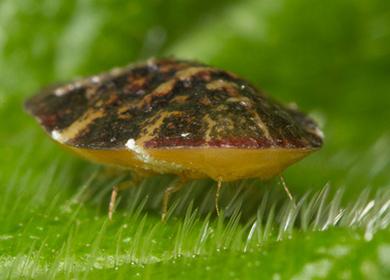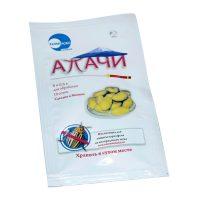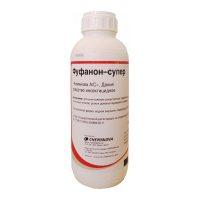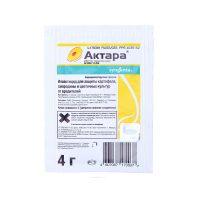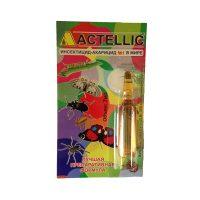The content of the article
If you do not start the fight against pests in a timely manner, the plant will wither, wither, then die completely. Unlike other pests, when destroying scutes, they necessarily use the method of mechanical cleaning of plants: standard means do not always give the desired effect.
Pest Information
The scabbard belongs to the family of homoptera, feeds on the juice of the plant, leading to its death. Depending on the variety, the length of the adult varies from 0.5 to 5 mm. The insect is protected by a dense waxy thyroid carapace. On the leaves, the scabbard looks like a dense tubercle.
Males and females are different. Females have a convex, rounded shell, no wings, legs, and sometimes no eyes. They are completely motionless. Males are smaller, covered with oblong flattened carapace. Their limbs are normally developed, they have wings, but their mouth is reduced. Males live less - they die soon after mating.
Insects leave eggs on leaves and stems. The first days after the appearance of the larvae are active, then they attach to the leaf or stem, become immobile. As they grow, they molt. Gradually, a shield is formed around the wax secret and discarded skins around them.
Species of parasitic insects
In nature, there are more than 2000 species of scale insects parasitizing on different cultures. They differ in the color of the shell, size. The most common are the following.
- Cactus. The shape is round, the size is up to 2.5 mm. The shell is yellowish. They settle mainly on cacti, spread rapidly.
- Oleander. Light, medium-sized insects. Often affect ivy, asparagus, dracaena.
- Palm. They are distinguished by a gray translucent shell. Often found on all types of palm trees, orchids, bromeliads, anthurium.
- Orange. The pest is up to 2 mm long, with a red-brown coating. It affects rosaceous crops and citrus plants.
- Bromeliads. The shell is yellowish, translucent. Size does not exceed 2.5 mm. Often settles on bromeliads, orchids and palm trees.
Signs of defeat with a photo
The harm of the scale for home flowers is the sucking of juice by insects. The plant begins to dry gradually, dies over time. There are three possible signs of scaling.
- Plaque. Convex spots resembling plaques appear on leaves and stems. Color - from light yellow to brown.
- Sticky coating. Even in the early stages of infection, drops of a sticky transparent liquid appear on the plant. Gradually, the entire flower becomes covered with plaque.
- Stunt growth. The plant stops growing, withers, the leaves turn yellow and fall off.

Reasons for the appearance
Where does the scabbard on indoor plants come from if the flower is contained indoors? Insects can enter from the street, get into contaminated soil. The main reasons for the appearance of scabies on indoor flowers are as follows.
- New plant in the house. Immediately after purchase, the plant must be quarantined - placed separately from other flowers. Even if there are no visible signs of insect damage, they may be in the larval stage. A new plant in the house poses a potential danger to all indoor flowers.
- Window. Young larvae could get with the wind through the windows. It is impossible to completely protect the flower from insects.
- Weakened plant. Weakened plants that do not receive enough nutrition often suffer from pest attacks.
How to deal with scale insects on indoor plants
It is not easy to remove the scabbard at home. The carapace partially protects the insect from superficial chemicals, small eggs and larvae are not visible to the naked eye. To save flowers, you need to act quickly, use complex methods of combating scale insects on indoor plants.
Mechanical cleaning
Regular removal of insects from the plant helps to reduce their number, but does not stop the development of the pest completely. The remaining eggs and larvae, as they develop, lead to the repeated reproduction of insects. Mechanical cleaning is used as the first stage of the fight against scale insects. The insect removal procedure involves three steps.
- Treatment. Prepare a concentrated solution of laundry soap. The soil is covered with polyethylene. A cotton pad is moistened in a solution, and the entire plant is thoroughly wiped. Particular attention is paid to the underside of the leaves.
- Destruction. A dense rag, a brush are moistened in a soap solution, and insects are removed. You can use tweezers.
- Water treatments. The flower is placed in the bath, washed under running water from soap residues. The procedure is completely repeated weekly for a month to avoid repeated outbreaks of pest reproduction.
Chemicals
In case of mass damage, it is better to purchase a special remedy for scale insects on indoor plants. Flowers are sprayed or watered with insecticides. Insects receive a dose of toxic substances along with the plant sap and die. In the reviews, flower growers distinguish the most effective preparations for scale insects:
- juvenoids and hormonal insecticides - “Admiral”;
- neonictinoids - “Apaches”, “Corado”, “Aktara”, “Confidor”, “Tanrek”;
- phosphorganic preparations - “Kemifos”, “Fufanon”, “Actellik”.
Insecticides are sold in the form of tablets, concentrate, powder. The tool is diluted, used according to the instructions. One treatment is not enough - after a few days, watering or spraying is repeated.
Folk remedies
In the fight against scale insects often use folk remedies. They are not toxic, but also less effective. The use of folk remedies is justified with a small number of insects. The most common recipes are listed below.
- Soap with alcohol. In a liter of hot water add a tablespoon of alcohol and liquid soap. The product is stirred until the appearance of foam, applied to places of accumulation of scutes. After an hour, the remnants of the product are washed off with running water.
- Soap with oil. 10 g of machine oil and liquid soap are mixed, 30 ml of water are added. The soil in the pot is covered with polyethylene. The mixture is distributed in places of accumulation of scale insects. After 12 hours, the flower is washed with running water.
- Washing powder with burdock oil. 10 g of washing powder and burdock oil are added to a liter of water, insisted for four hours. The solution is regularly wiped with leaves until the insects completely disappear.
- Wood ash. 300 g of ash are added to a liter of water, boiled for half an hour. Before use, the broth is diluted in 10 liters of water. The soil is covered with polyethylene, a plant is sprayed with a agent.
- Pepper. Hot peppers are passed through a meat grinder. 100 g of pepper is added to 2 liters of water, it is insisted for a day. Plants are sprayed with infusion at two-week intervals.
- Vinegar. After mechanical cleaning of the plant from pests, the stems and leaves are wiped with a weak solution of vinegar.
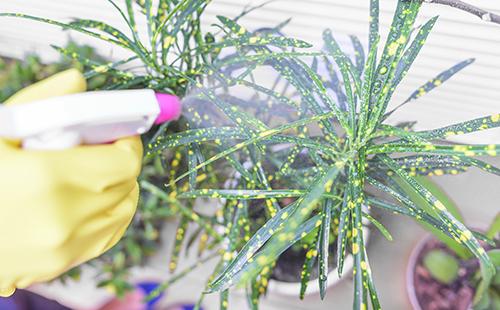
Preventative measures
Prevention will help prevent the appearance and reproduction of scale insects. Florists recommend sticking to five rules.
- Quarantine. The newly acquired specimens are quarantined - they are placed in a separate room, sprayed with a weak solution of insecticide and fungicide.
- Soap solution. Monthly flowers are washed with a mild soapy solution.
- Pruning and cleanliness. Sick, wilted leaves are pruned. Plant residues are removed from the pot.
- Disinfection. Periodically water the plants with a weak solution of potassium permanganate.
- Conditions of detention. Do not allow crowding of plants on the windowsill. Provide an optimal level of lighting and humidity.
Pests actively propagate in hot weather in stuffy rooms. The room needs to be aired daily, avoiding emergence of drafts. In summer, plants are recommended to be put on the balcony - quenching by natural temperature extremes increases the resistance of flowers to pests.
Since it is difficult to get rid of scabies on indoor plants, it is not necessary to start the state of the flower. Regular inspection, periodic treatment with soap or a weak insecticide solution will help prevent infection and death of the plant.
Reviews: "Helped" Aktara "
I fought quite original. I got a lemon with 10-15 leaves, about 170 cm in size. Since I thought that I would die anyway, I treated the leaves and stems with a preparation for cleaning the interior of the 2000 car, and after a couple of days I treated it with a mixture of alcohol-soap solution with water. After 2-3 weeks, the scabbard was “deaf” and after shaking the stem, it poured like ripe pears, while it cringed, darkened and one edge fell off the leaves.
Vitaliy, https://flowertimes.ru/shhitovka/
Folk remedies did not help me. First, I mechanically removed the pests, then soaped the household. soap. After a couple of days, I found a scale insect again. I repeated the procedure and again failed. Helped Aktara. Processed 3 times with an interval of 7-8 days.
Lana http://sadowody.ru/tsvety/shhitovka-na-komnatnyih-rasteniyah-kak-borotsya.html
Because of this living creature, I almost lost Benjamin's ficus almost 2 meters tall ... Since my handsome boy, all the leaves have flown around ... I had to brush every branch with a soap-alcohol solution with a toothbrush. After that, after 2 hours there was Aktara. Complete transplant with soil replacement and flushing the pot with the same Actara. It seems that she managed, but now she has found such people living on a flexible and spathic. Spatik already washed 2 times with soap and alcohol, and under the bend she dug Golden Spark tablets, cut a twig with animals. Waiting for a result. I do not want a repetition with ficus !!!
Zmeulka, http://forum-flower.ru/showthread.php?t=351
